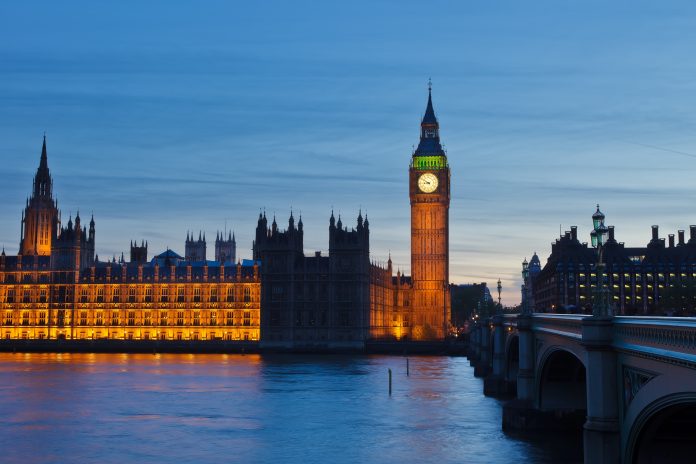Infrastructure in the developed world is creaking – we estimate that over $4.6 trillion of spend is required by 2035 to keep pace with needs, and a Green Book refresh won’t do it
The Government’s National Infrastructure Strategy is a welcome development in tackling this challenge in the UK. However, to become a key enabler to achieve ‘levelling up’, a much broader cultural and ideological change needs to happen.
To support genuine change, various decision-making bodies should be moved outside of London, the civil service needs to become more diverse and additional powers should be regionalised. These measures could be strengthened through more coherent objectives underpinning all high-value investments and a greater focus on regular tracking and reporting around measures of regional disparity.
Positive noises have already been made in a number of these areas, but now it is time to deliver if we are to really enact positive change.
The Green Book: a new way of thinking
The Green Book is HM Treasury’s guidance on how to appraise and evaluate policies, projects and programmes and allocate funding across the UK. It is therefore essential that both the guidance and appraisals process within Government tackles the persistent inequality seen across the country. The Green Book Review sets out how to tackle the much-discussed question of whether the guidance itself perpetuates regional inequalities. The review has found that by focusing appraisals on the benefit cost ratio (BCR), social policy objectives are not reflected in the calculation and there is little guidance on how to identify the geographical region that realises the benefits and costs, making it difficult for ministers to target deprived areas.
In order to combat these issues, the Green Book refresh places less emphasis on the BCR and instead shines more of a spotlight on the project options which help deliver policy objectives, both national and local. The aim is to give ministers the relevant information in order to allocate funding to areas that need it most and give some of the decision-making process back to local government by recommending proposals align to local strategies.
If this is genuinely to be helpful, clearer guidance is now required around what genuinely constitutes differential place-based impacts. This could include suggested measures and examples.
Connecting investment decisions to the local community, whilst ensuring accountability
Currently, much of the machinery of Government is centralised in London, often leaving smaller cities and communities behind. The much-anticipated Devolution White Paper which was expected to set out a once in a generation step change in the structure of local government, has been postponed until next year. At the same time, local government reforms are being scaled back.
For levelling-up to be effective, it needs to be routed in the realities of local community needs; which are often varied and difficult to understand from afar. The right devolution of powers could support both better prioritisation and local accountability for delivery. The government will need to be bold in this regard, building trust through successful delivery on the ground.
Determining smart targets and objectives
While the revised Green Book emphasises that options will be appraised against central government objectives, greater specificity of these targets could help with accountability. For example, there is no target reflecting what a “levelled up” society would look like. GDP is one measure that has been commonly used in the past to assess economic equality. However, there are limitations to the usefulness of GDP as a measure in that it does not always account for wellbeing. Equally, GDP growth can cause detrimental effects on the environment and so be in tension with the legal constraints of the net zero emissions target noted in the Green Book Review.
Internationally there are other examples of countries looking to reform their budgetary processes that we could look to. In New Zealand, for example, recent changes place an emphasis on investments in human, natural, social and physical capital and establish various target measures; such as health, knowledge and skills, housing, environment, income and consumption, and cultural identity.
More sophisticated statistical modelling could also help support fairer allocations around funding, as opposed to a Green Book refresh. For example, NHS England uses a statistical formula to promote a fair and objective distribution of resources with the aim of reducing health inequalities across the UK. The formula utilises a complex assessment of factors such as demography, morbidity and deprivation to ensure localities are allocated their ‘fair share’ of the health budget.
Whilst judgement will always play a significant role in such complex UK wide funding decisions, the use of more modern modelling techniques could improve decision making and further evidence impartiality.
Infrastructure is only one piece of the growth puzzle
Infrastructure investment in isolation doesn’t create longer term economic potential. More sustainable growth requires other building blocks; such as education and innovation. Often these enablers are most lacking in deprived areas.
For example, HS2 (proposed with the levelling up agenda in mind) will have differing effects across the route. Areas, such as Tees Valley, a key target for levelling-up, also has poorer educational levels meaning the impact of the investment might not be fully realised. Complementary policies should be employed to foster skills and education.
The Green Book Review is the start of a journey to achieve the levelling up agenda, but there is still a long way to go.
Article by Christian Norris, Head Economist, and Louise Northrop, economics expert, at PA Consulting.




![Europe’s housing crisis: A fundamental social right under pressure Run-down appartment building in southeast Europe set before a moody evening sky. High dynamic range photo. Please see my related collections... [url=search/lightbox/7431206][img]http://i161.photobucket.com/albums/t218/dave9296/Lightbox_Vetta.jpg[/img][/url]](https://www.openaccessgovernment.org/wp-content/uploads/2025/04/iStock-108309610-218x150.jpg)






